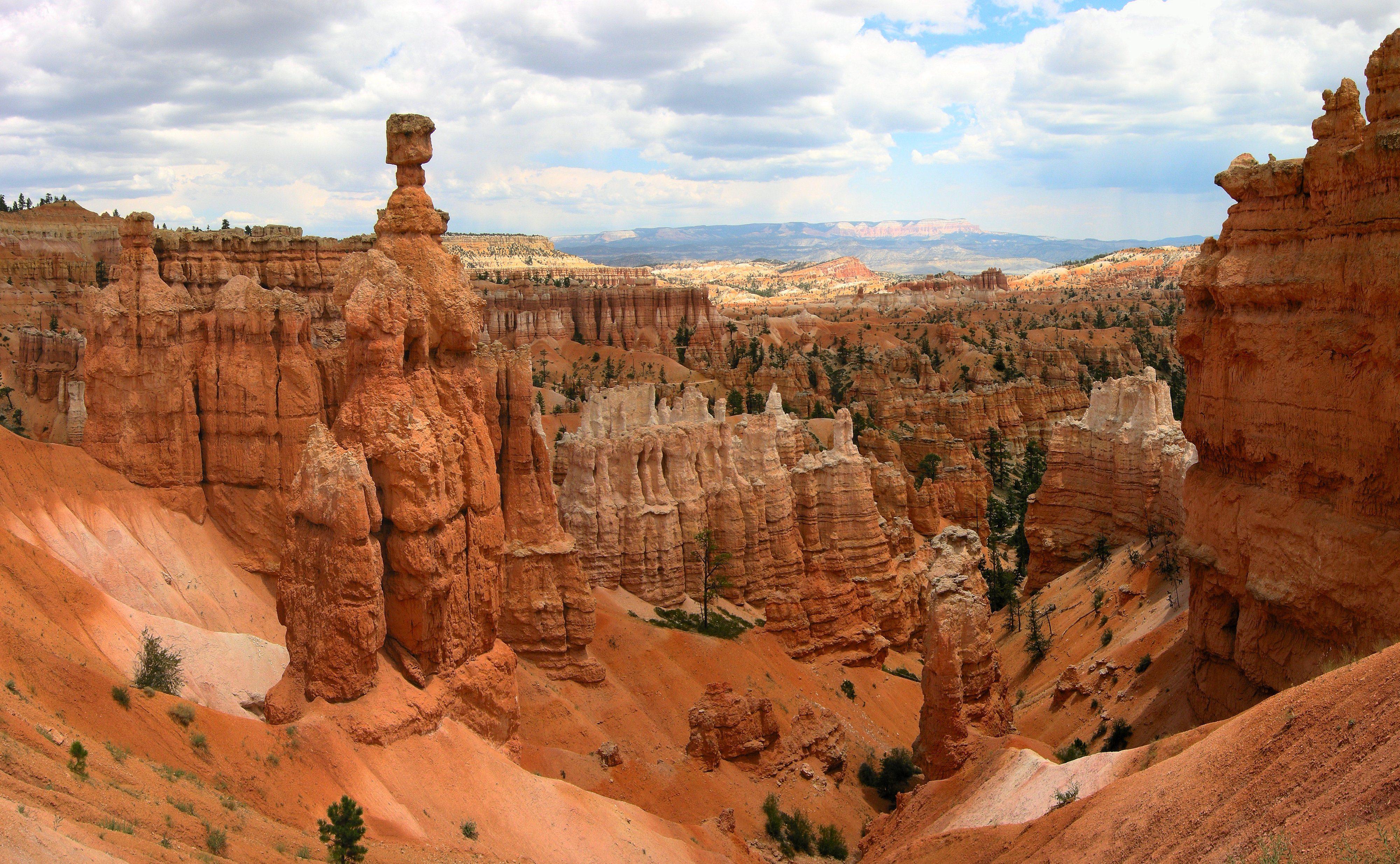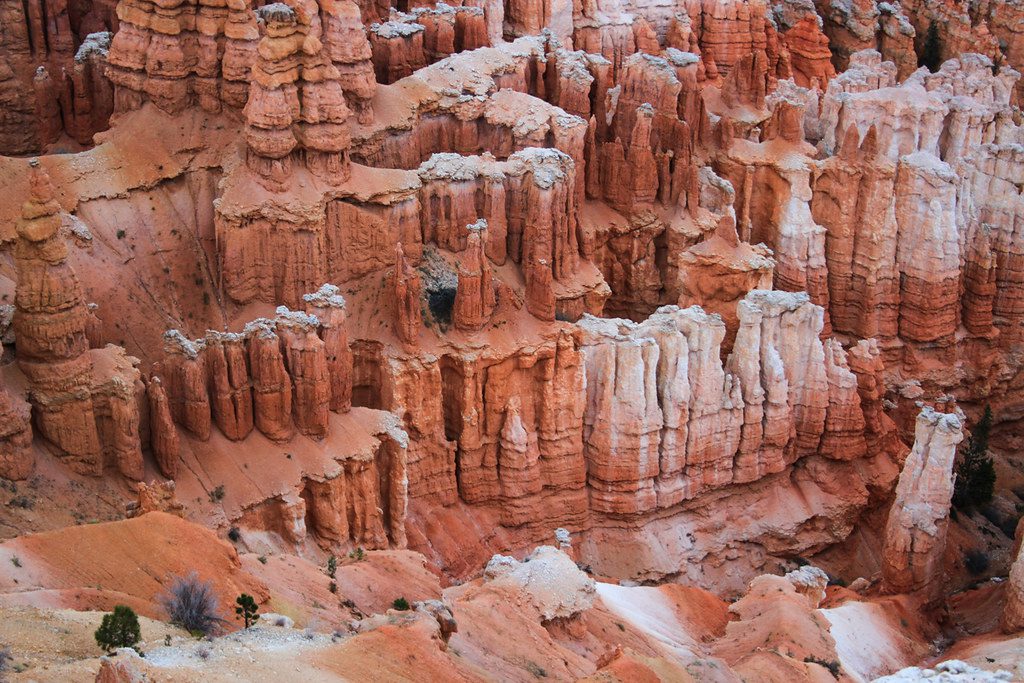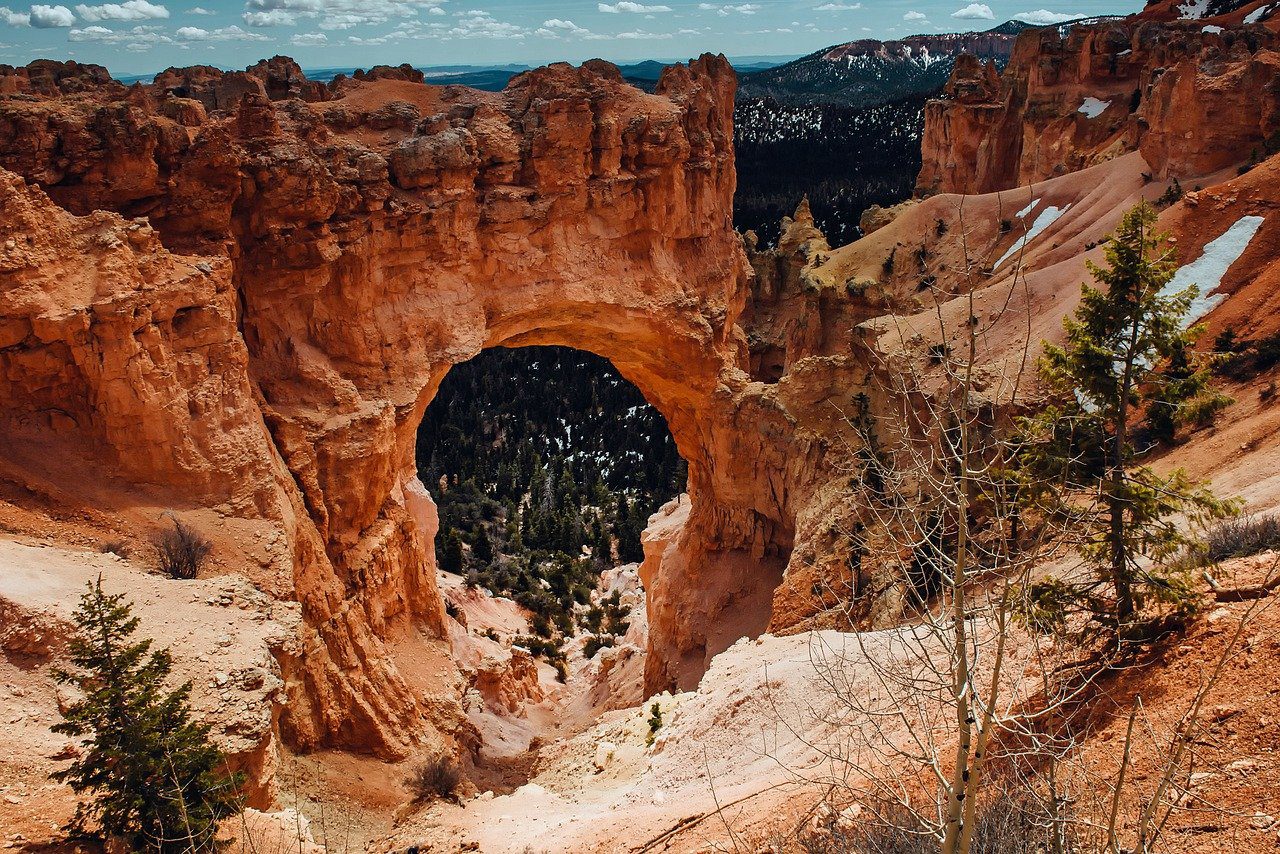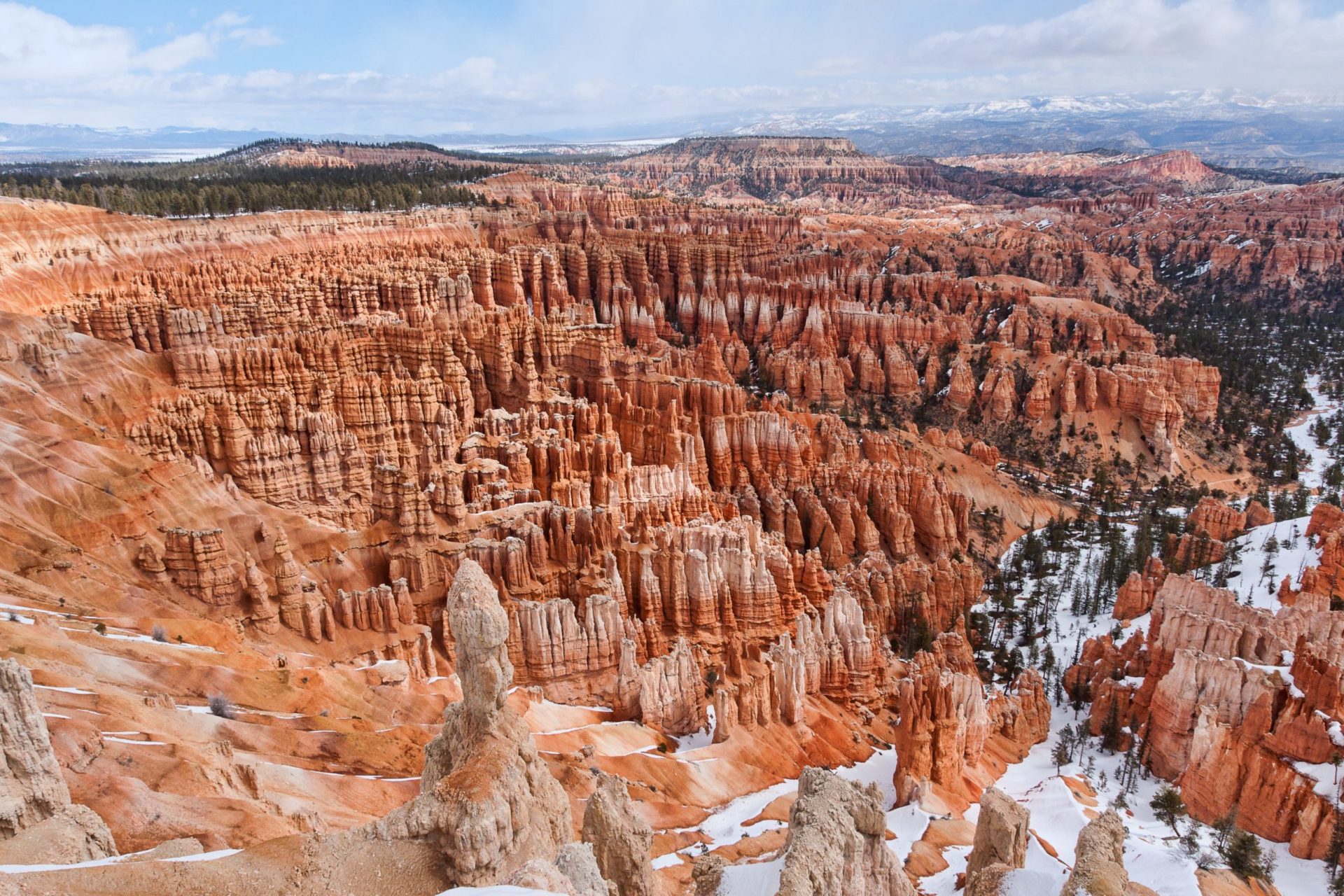Bryce Canyon National Park is a sprawling preserve in southwestern Utah, where coral-tinged hues of gnarled sedimentary rock make the region look like another planet. Comprised largely of geological formations known as hoodoos, Bryce Canyon National Park is a captivating place for a wilderness adventure. Hike, snowshoe, ski or ride on horseback through the spectacular scenery. Camp overnight to see one of the United States’ most breathtaking night skies and try guided stargazing.

A popular way to experience the park is via a scenic drive. Several viewpoints across the park have vast amphitheaters of hoodoos. Look out across the mysterious formations and take photographs of the changing colors of the rock as the sun moves across the sky. Douglas fir and ponderosa pines add contrasting colors to the orange-hued rock landscapes.
Follow one of the park’s eight walks that take less than a day to complete or combine several walks for a more challenging experience. Easy walks include Mossy Cave, the Rim Trail and Queens Garden. The Fairyland and Peekaboo loops are more difficult treks. Pick up a backcountry camping permit and try one of the park’s overnight trails.

Between April and October, ride on horseback along several of the multi-use trails. If you’re visiting in winter, explore the marked ski runs or strap on snowshoes and tackle the trails.
Join an evening ranger program to learn about astronomy, nocturnal animals and protection of the night sky. Bryce Canyon National Park has one of the darkest skies in North America. Stargazers flock to its annual Astronomy Festival in June.

The park has two campgrounds. North Campground is open year-round, while Sunset Campground is open from late spring to fall. You can also stay overnight at Bryce Canyon Lodge.
According to expedia.com. Source of photos: internet








